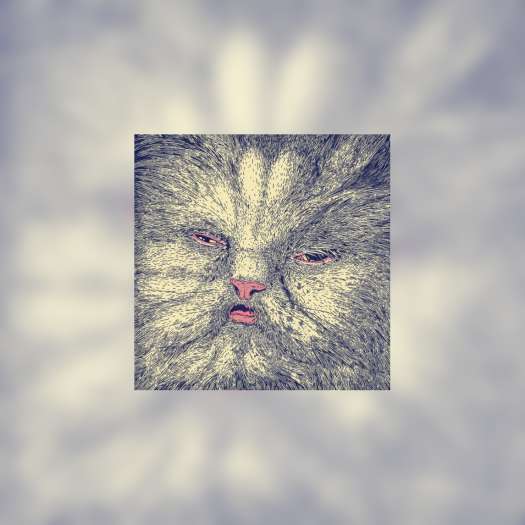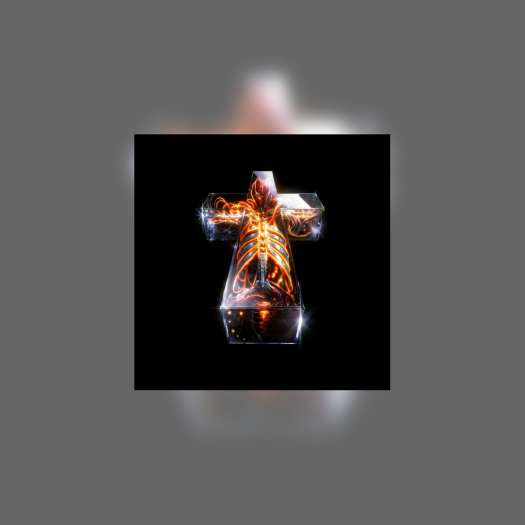Alita: Battle Angel might seem like a strange studio release for Valentine's Day, but there's a lot going on there. Sure, there'll be a cybernetic romance, and yes, there's a compassionate gentleman doctor who provides love and warmth. But Alita: Battle Angel takes aim at the heartstrings with crazy fights and battletech. That's what V-Day is really all about.
From director Robert Rodriguez, with a script by James Cameron and Laeta Kalogridis, Alita: Battle Angel is based on the graphic novel series Gunnm by Yukito Kishiro — a story many believe perfected the cyberpunk manga movement. Thankfully, you can still enjoy Battle Angel with little context. Thanks, Hollywood!
But if you're interested in a little history of how we got here, Exclaim! has a rundown on the source material, sprinkled with some fun facts. If you're someone who regularly attends Anime North, this ain't for you. We're scratching the surface here, so kindly refrain from schooling us about Ghost in the Shell. Or don't: It wouldn't be cyberpunk not to.
If cyberpunk leans on A.I. and post-industrial dystopias, then its origins are believed to have come from the "New Wave" movement of science fiction from the 1960s and '70s. It was a departure from Isaac Asimov, or the dryness of Frank Herbert's Dune. Many writers considered science fiction to be formulaic at this point, so the next evolution was a modernist view of technology-based stories: What would mega-corporations or the underground do with the latest tech? Certainly not what was intended, right?
Writers like J.G. Ballard, Harlan Ellison and of course Philip K. Dick emerged, infusing new elements rarely seen before, like drugs and sex, and a fear of technology in aspects of human life. It's a nod to the works of the Beat Generation, notably William S. Burroughs, and, further back, the Dadaists. In works like Dick's Do Androids Dream of Electric Sheep? — the inspiration for Blade Runner — the genre explores the moral questions around cybernetic and artificial intelligence. This generation created a step forward, and the next wave of writers would play in a world of cyberpunks and humanism.
MANGA 101
Talk to someone about "comics" and you're bound to get opinions on cape stories. But often overlooked is the art of Japanese manga, something yet to be fully embraced by North America. Diving into manga is no easy task — the well of material is deep, and it's a bit like getting into jazz; lots of material but where to begin? Manga has its fair share of enthralling plotlines and stunning artwork, and a few have crossed over to Western audiences. Here are some you probably know, or have at least heard of — and if you haven't, file them under "gateway drugs."
Uzumaki by Junji Ito (1998)
Japanese horror may not sound like the perfect starter book, but Uzumaki is rich. Throughout it, Junji Ito seems fixated on spirals — yes, actual spirals, like a mosquito coil. It's the device of "spirals" that take over a small Japanese town, cursing its citizens. The town literally goes crazy on spirals. Teenager Kirie Goshima is influenced in a deeper way, and she really messes with everyone — not by choice. Everything gets weirder with perpetuity, because … spirals, man. Uzumaki is the dark horse of popular manga, with twisted humour and a nihilistic bent.
Astro Boy by Osamu Tezuka (1951)
This one you likely know. There was that cartoon from the '60s, and the movie from 2009. But Osamu Tezuka was way ahead of his time and his work can be traced back to the early 1950s. Originally titled Mighty Atom, it began as a darker tale of a 21st century Pinocchio, created by the brilliant Doctor Tenma, after losing his son in an ill-fated accident. Many consider Tezuka to be the "father" of manga, in large part because of this, his most influential work.
Dragon Ball by Akira Toriyama (1984)
Another you've no doubt heard mention of is Dragon Ball / Dragon Ball Z. It follows the adventures of Son Goku, who searches the world for the seven elusive Dragon Balls. Goku seeks to master martial arts, meets some formidable friends and foes, and hopes to harness the power of the Dragon Balls. No, they're not giant reptilian testicles — they're orbs that'll summon a wish-granting dragon. Dragon Ball is lighter in tone, focusing on comedy and coming-of-age stories, and it's one of the most successful titles in manga history.
Akira by Katsuhiro Otomo (1982)
Akira is the cyberpunk prototype, the genre no-brainer. Chances are you've seen the 1988 animated version, which is groundbreaking in its own right. Akira is a postwar tale, taking place after Tokyo is wiped out by a nuclear explosion in 1992. A replacement city is completed in 2030 called Neo-Tokyo, situated on an artificial island in Tokyo Bay. From there, it's a beautifully drawn story of awakenings and youth alienation, with gibes at old-school Japanese culture. Akira is a high-concept classic and it stands alone.
Battle Angel Alita by Yukito Kishiro (1990)
If Akira led the way for cyberpunk manga, Battle Angel Alita perfected the tradition. Known in Japan under the title Gunnm — which translates to "Gun Dream" — the setting is sharply post-apocalyptic, and Alita's journey is one of self-discovery. When a cybernetic doctor, Daisuke Ido, finds her in a scrapyard, our hero is nothing but a head. She's given a body, a name and a purpose — her body just happens to be an actual killing machine called "the Berserker." Soon after she becomes a "Hunter-Warrior," seeking justice for the weak in the lawless city of Tiphares. There are only two things she remembers — a legendary martial art known as Panzer Kunst, and how to kick ass with it. Beyond the expected cyberpunk tropes, Battle Angel Alita also explores what it means to be human; heart, brain, soul, or all of the above?
ALITA ON THE SCREEN
Alita: Battle Angel — in theatres February 14 — is not the first time Alita has been adapted to the screen. In Japan, adaptations have been made for Original Video Animation (OVA) (a kinder way of saying "straight to video"). In 1993 there were two episodes under the title Battle Angel released on OVA, roughly 30 minutes in length: Rusty Angel and Tears Sign. Alita's creator, Yukito Kishiro, seemed to care little about seeing it made. He distanced himself from it, and the result was a lukewarm domestic reception. Battle Angel had an unexpected by-product, though — the soundtrack went on to have its own moment, particularly a track named "Cyborg Mermaid." Check it out if you like schmaltzy, drawn-out pop tunes. Weirdly, in the U.S., the two-episode Battle Angel is considered one of the best converted anime to come out of the '90s.
In 1998, PlayStation and publisher Banpresto took a chance with an RPG game version called Gunnm: Martian Memory. Vidiots and purists think this game falls short of exceptional, but it's still considered a worthwhile play. Among fans of the manga, it's respected more than the anime attempt because of Kishiro's direct involvement in story development. He used it to continue what he never got to finish — an arc where Alita begins the "Space Story" intended to play out in the manga. With lots of boss fights and an addictive upgrade system, you could do worse.
The time has come for a major big screen adaptation. James Cameron has been sitting on this project for many years, waiting for the tech to catch up. He's a super-fan of the source material, but he's not in the director's chair. This one's being helmed by Robert Rodriguez, and he's got a stellar cast including Rosa Salazar (Alita), Mahershala Ali (Vector) and Christoph Waltz (Dr. Dyson Ido). Alita: Battle Angel will touch on the most exciting elements of this epic story, with a focus on the first three books (of nine) — Rusty Angel, Iron Maiden and Killing Angel. Expect a thrill-ride, so catch this one in IMAX if you can, and impress your friends with this handy-dandy breakdown!
From director Robert Rodriguez, with a script by James Cameron and Laeta Kalogridis, Alita: Battle Angel is based on the graphic novel series Gunnm by Yukito Kishiro — a story many believe perfected the cyberpunk manga movement. Thankfully, you can still enjoy Battle Angel with little context. Thanks, Hollywood!
But if you're interested in a little history of how we got here, Exclaim! has a rundown on the source material, sprinkled with some fun facts. If you're someone who regularly attends Anime North, this ain't for you. We're scratching the surface here, so kindly refrain from schooling us about Ghost in the Shell. Or don't: It wouldn't be cyberpunk not to.
If cyberpunk leans on A.I. and post-industrial dystopias, then its origins are believed to have come from the "New Wave" movement of science fiction from the 1960s and '70s. It was a departure from Isaac Asimov, or the dryness of Frank Herbert's Dune. Many writers considered science fiction to be formulaic at this point, so the next evolution was a modernist view of technology-based stories: What would mega-corporations or the underground do with the latest tech? Certainly not what was intended, right?
Writers like J.G. Ballard, Harlan Ellison and of course Philip K. Dick emerged, infusing new elements rarely seen before, like drugs and sex, and a fear of technology in aspects of human life. It's a nod to the works of the Beat Generation, notably William S. Burroughs, and, further back, the Dadaists. In works like Dick's Do Androids Dream of Electric Sheep? — the inspiration for Blade Runner — the genre explores the moral questions around cybernetic and artificial intelligence. This generation created a step forward, and the next wave of writers would play in a world of cyberpunks and humanism.
MANGA 101
Talk to someone about "comics" and you're bound to get opinions on cape stories. But often overlooked is the art of Japanese manga, something yet to be fully embraced by North America. Diving into manga is no easy task — the well of material is deep, and it's a bit like getting into jazz; lots of material but where to begin? Manga has its fair share of enthralling plotlines and stunning artwork, and a few have crossed over to Western audiences. Here are some you probably know, or have at least heard of — and if you haven't, file them under "gateway drugs."
Uzumaki by Junji Ito (1998)
Japanese horror may not sound like the perfect starter book, but Uzumaki is rich. Throughout it, Junji Ito seems fixated on spirals — yes, actual spirals, like a mosquito coil. It's the device of "spirals" that take over a small Japanese town, cursing its citizens. The town literally goes crazy on spirals. Teenager Kirie Goshima is influenced in a deeper way, and she really messes with everyone — not by choice. Everything gets weirder with perpetuity, because … spirals, man. Uzumaki is the dark horse of popular manga, with twisted humour and a nihilistic bent.
Astro Boy by Osamu Tezuka (1951)
This one you likely know. There was that cartoon from the '60s, and the movie from 2009. But Osamu Tezuka was way ahead of his time and his work can be traced back to the early 1950s. Originally titled Mighty Atom, it began as a darker tale of a 21st century Pinocchio, created by the brilliant Doctor Tenma, after losing his son in an ill-fated accident. Many consider Tezuka to be the "father" of manga, in large part because of this, his most influential work.
Dragon Ball by Akira Toriyama (1984)
Another you've no doubt heard mention of is Dragon Ball / Dragon Ball Z. It follows the adventures of Son Goku, who searches the world for the seven elusive Dragon Balls. Goku seeks to master martial arts, meets some formidable friends and foes, and hopes to harness the power of the Dragon Balls. No, they're not giant reptilian testicles — they're orbs that'll summon a wish-granting dragon. Dragon Ball is lighter in tone, focusing on comedy and coming-of-age stories, and it's one of the most successful titles in manga history.
Akira by Katsuhiro Otomo (1982)
Akira is the cyberpunk prototype, the genre no-brainer. Chances are you've seen the 1988 animated version, which is groundbreaking in its own right. Akira is a postwar tale, taking place after Tokyo is wiped out by a nuclear explosion in 1992. A replacement city is completed in 2030 called Neo-Tokyo, situated on an artificial island in Tokyo Bay. From there, it's a beautifully drawn story of awakenings and youth alienation, with gibes at old-school Japanese culture. Akira is a high-concept classic and it stands alone.
Battle Angel Alita by Yukito Kishiro (1990)
If Akira led the way for cyberpunk manga, Battle Angel Alita perfected the tradition. Known in Japan under the title Gunnm — which translates to "Gun Dream" — the setting is sharply post-apocalyptic, and Alita's journey is one of self-discovery. When a cybernetic doctor, Daisuke Ido, finds her in a scrapyard, our hero is nothing but a head. She's given a body, a name and a purpose — her body just happens to be an actual killing machine called "the Berserker." Soon after she becomes a "Hunter-Warrior," seeking justice for the weak in the lawless city of Tiphares. There are only two things she remembers — a legendary martial art known as Panzer Kunst, and how to kick ass with it. Beyond the expected cyberpunk tropes, Battle Angel Alita also explores what it means to be human; heart, brain, soul, or all of the above?
ALITA ON THE SCREEN
Alita: Battle Angel — in theatres February 14 — is not the first time Alita has been adapted to the screen. In Japan, adaptations have been made for Original Video Animation (OVA) (a kinder way of saying "straight to video"). In 1993 there were two episodes under the title Battle Angel released on OVA, roughly 30 minutes in length: Rusty Angel and Tears Sign. Alita's creator, Yukito Kishiro, seemed to care little about seeing it made. He distanced himself from it, and the result was a lukewarm domestic reception. Battle Angel had an unexpected by-product, though — the soundtrack went on to have its own moment, particularly a track named "Cyborg Mermaid." Check it out if you like schmaltzy, drawn-out pop tunes. Weirdly, in the U.S., the two-episode Battle Angel is considered one of the best converted anime to come out of the '90s.
In 1998, PlayStation and publisher Banpresto took a chance with an RPG game version called Gunnm: Martian Memory. Vidiots and purists think this game falls short of exceptional, but it's still considered a worthwhile play. Among fans of the manga, it's respected more than the anime attempt because of Kishiro's direct involvement in story development. He used it to continue what he never got to finish — an arc where Alita begins the "Space Story" intended to play out in the manga. With lots of boss fights and an addictive upgrade system, you could do worse.
The time has come for a major big screen adaptation. James Cameron has been sitting on this project for many years, waiting for the tech to catch up. He's a super-fan of the source material, but he's not in the director's chair. This one's being helmed by Robert Rodriguez, and he's got a stellar cast including Rosa Salazar (Alita), Mahershala Ali (Vector) and Christoph Waltz (Dr. Dyson Ido). Alita: Battle Angel will touch on the most exciting elements of this epic story, with a focus on the first three books (of nine) — Rusty Angel, Iron Maiden and Killing Angel. Expect a thrill-ride, so catch this one in IMAX if you can, and impress your friends with this handy-dandy breakdown!




